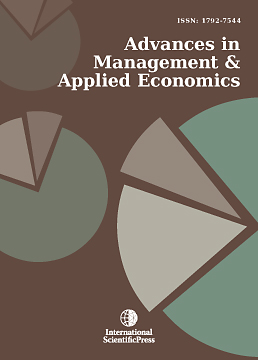Advances in Management and Applied Economics
The Evaluation of Energy Efficiency and its Decoupling from Economic Growth under the Carbon Peak Target
-
 [ Download ]
[ Download ]
- Times downloaded: 7791
Abstract
The Global Malmquist-Luenberger index was used to measure the energy efficiency of 11 provinces and regions in eastern China from 2010 to 2019, the Tapio decoupling model was constructed to analyze the decoupling relationship between economic growth and energy consumption and energy use efficiency, and the prediction results of the carbon peak time of each province in the existing literature were combined to put forward suggestions for the provinces that were not ideal for the decoupling. The results show that: (1) The total average energy efficiency of the 11 eastern regions of China during the period from 2010 to 2019 was 0.911, showing an overall upward trend, while the energy efficiency changes in each region were different; (2) The decoupling of economic growth, energy consumption and energy efficiency in Hebei and Hainan provinces was not ideal, and the decoupling in other regions was getting better; (3) There will be a large gap in the time of carbon peak in 11 regions in eastern China. Beijing, Tianjin, Shanghai, Jiangsu, Zhejiang, Guangdong and Liaoning will achieve carbon peak in 2030 and before; There will be no peaks in Hebei and Hainan regions, while the peaks in Shandong and Fujian appear after 2030.
JEL classification numbers: F06.
Keywords: Carbon peak, Eastern region, Energy efficiency, Tapio decoupling model, Directional distance function, Global Malmquist-Luenberger index (GML).
